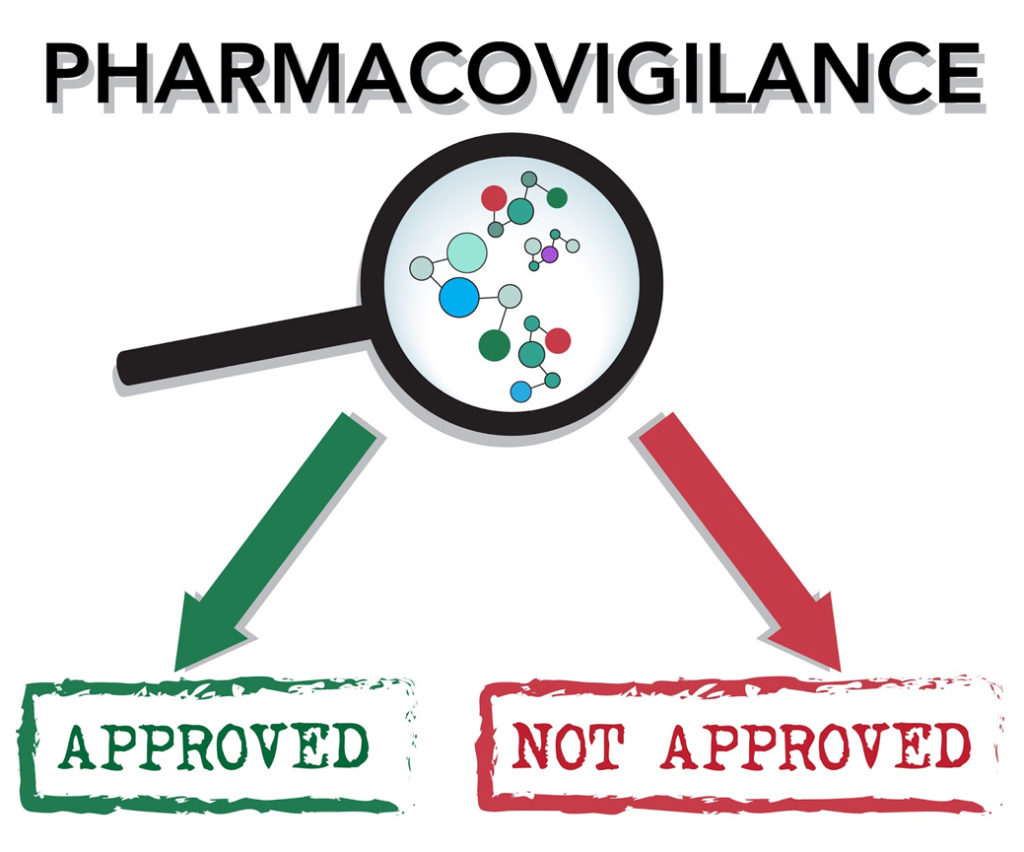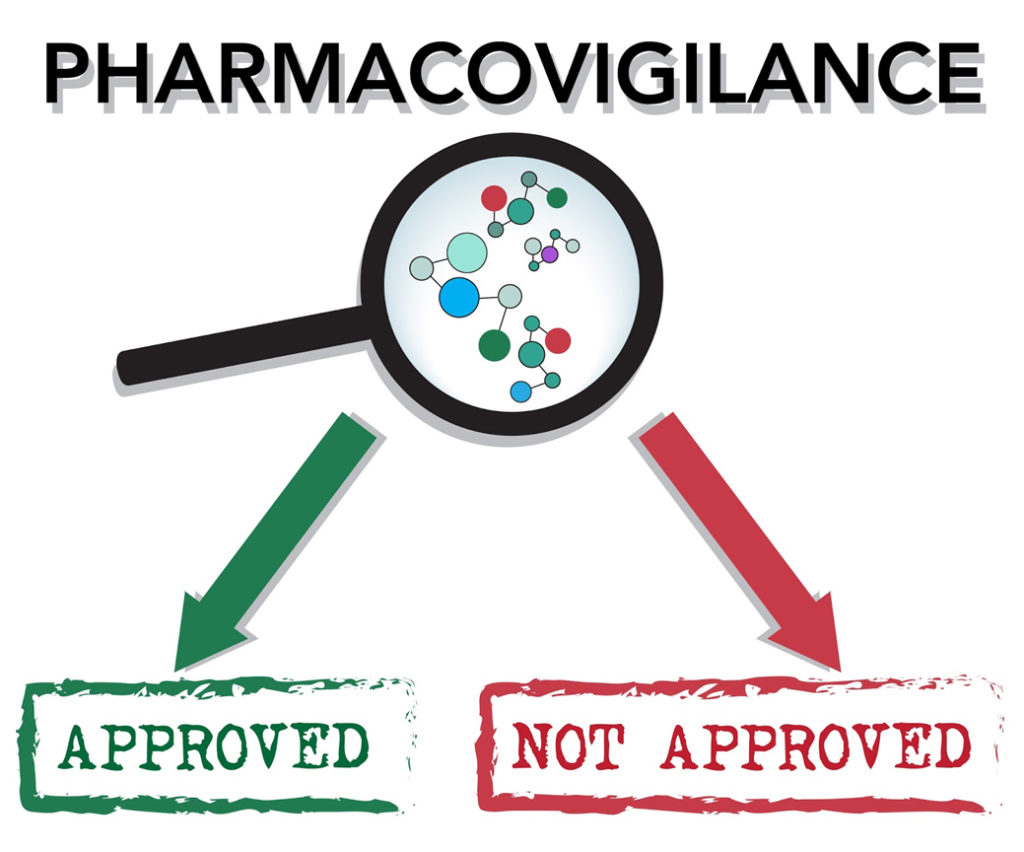Drug Safety (Rational and Safe use of Medicines)
“To undergo treatment you have to be very healthy, because apart from your sickness you have to withstand the medicine” (Molière)
 Drug safety ( Pharmacovigilance) – The science and activities relating to the detection, evaluation, understanding and prevention of adverse drug reactions or any other drug-related problems.
Drug safety ( Pharmacovigilance) – The science and activities relating to the detection, evaluation, understanding and prevention of adverse drug reactions or any other drug-related problems.
Why drug safety? – Adverse Drug Reactions are among the top ten causes of mortality. The percentage of hospital admissions due to drug related events in some countries is about or more than 10%. Economic impact Drug related morbidity and mortality expenses exceeded US$ 177.4 billion in the USA in 2000.ADR database shows- No of reports: more than 3.5 million, each year increase ~160,000 / year.
Drug safety heavily focuses on Adverse Drug Reactions (ADR), which are defined as any response to a drug which is noxious and unintended. ADR is considered serious if it meets one or more of the following criteria:
- Results in death or is life-threatening;
- Requires inpatient hospitalization or prolongation of existing hospitalization;
- Results in persistent or significant disability or incapacity;
- Results in a congenital anomaly (birth defect)
FDA drug categories – A, B, C, D or X
Category A
Adequate and well-controlled studies have failed to demonstrate a risk to the fetus in the first trimester of pregnancy
Category B
Animal reproduction studies have failed to demonstrate a risk to the fetus and there are no adequate and well-controlled studies in pregnant women.
Category C
Animal reproduction studies have shown an adverse effect on the fetus and there are no adequate and well-controlled studies in humans, but potential benefits may warrant use of the drug in pregnant women despite potential risks.
Category D
There is positive evidence of human fetal risk based on adverse reaction data from investigational or marketing experience or studies in humans, but potential benefits may warrant use of the drug in pregnant women despite potential risks.
Category X
Studies in animals or humans have demonstrated fetal abnormalities and/or there is positive evidence of human fetal risk based on adverse reaction data from investigational or marketing experience, and the risks involved in use of the drug in pregnant women clearly outweigh potential benefits.
Eg: atorvastatin, warfarin, methotrexate,
Pharmaceutical companies perform clinical trials, testing new drugs on people before they are made generally available to see their risk / benefit profile
Specific Patient Populations


Pregnant and lactating women
A pregnant woman must not take any medication without consulting a specialist about the safety of the medication as it may affect the formation of the fetus. During the period of lactation, mothers should consult professionals before use of any medication because some medications can be excreted in breast milk, which may have a negative impact on the infant.
Children
We should take extreme caution when using any medications for children. The reasons are- the lack of scientific studies and clinical trials needed to evaluate the safety of these medications in this age group and also their vital organs are not mature, and thus exposure to certain medications may lead to toxic side effects as the body is mostly unable to fully metabolize or excrete the drugs.
Old people
This group is considered to be most vulnerable to the effect of medications and so it is very important to consider their health status before prescribing any medication, for several reasons. The physiological functions of many body organs decline with age, especially important organs such as the liver and kidneys. Older people can suffer from many chronic illnesses, such as high blood pressure, diabetes, and high blood cholesterol and lipids, possibly necessitating the chronic use of multiple medications, which may conflict with each other.
Drug interactions
Every patient must ensure they are aware of all necessary information regarding those drugs, as well as the possibility of interactions with other drugs or certain food types, through consulting the pharmacist or physician. Groups that are at extreme risk and exposure to those drug interactions include: Patients who use multiple medications, Elderly patients, Patients with multiple chronic diseases and illnesses
Ensuring drug safety
Drug safety is the main aspect of medical therapy that can play a major role in deciding which drug should be given to a patient. Considering the concept of benefit–risk balance drugs with a high risk profile should be avoided unless needed. Personalized medicine should be considered when medications are given to patients.
It is possible to avoid these side effects by using the drug in the proper way, and by following the instructions included in the drug leaflet or provided by the pharmacist or the physician. Knowing the necessary information about a medicine is considered the first step in avoiding side effects.
The risks from medications could be minimized through patient education about drug safety and openness with the patient, allowing him/her to ask questions related to their disease or medications. A good relationship between the medical team and the patient is one of the most important determinants for drug safety.
“Dying from a disease is sometimes unavoidable. But, dying from an adverse drug reaction is unacceptable”(Dr. Vladimir Lepakhin)





 Sleep follows a pattern of alternating REM (rapid eye movement) and NREM (non-rapid eye movement) sleep throughout a typical night in a cycle that repeats itself about every 90 minutes. NREM (75% of night): As we begin to fall asleep, we enter NREM sleep, which is composed of stages 1-4. REM (25% of night).
Sleep follows a pattern of alternating REM (rapid eye movement) and NREM (non-rapid eye movement) sleep throughout a typical night in a cycle that repeats itself about every 90 minutes. NREM (75% of night): As we begin to fall asleep, we enter NREM sleep, which is composed of stages 1-4. REM (25% of night). Persons get irritable and exhausted, easily distracted and often don’t make sound decisions. Sleep deprivation negatively impacts the immune system, may also lead to weight gain, high blood pressure, cancer, heart disease, stroke, diabetes, bone loss and depression Sleep deprivation may also impair learning, memory, alertness, concentration, judgment, problem solving and reasoning, as well as increase your risk of accidents.
Persons get irritable and exhausted, easily distracted and often don’t make sound decisions. Sleep deprivation negatively impacts the immune system, may also lead to weight gain, high blood pressure, cancer, heart disease, stroke, diabetes, bone loss and depression Sleep deprivation may also impair learning, memory, alertness, concentration, judgment, problem solving and reasoning, as well as increase your risk of accidents.
 If parents feel that development is slow, they check their impression with the other parents, relatives, and their pediatrician. You probably get an answer such as Oh!! Don’t worry, he / she will outgrow it. Look at my child she was so quiet and now she is a chatter box, give him/her time.
If parents feel that development is slow, they check their impression with the other parents, relatives, and their pediatrician. You probably get an answer such as Oh!! Don’t worry, he / she will outgrow it. Look at my child she was so quiet and now she is a chatter box, give him/her time. You would feel guilty waiting and then finding out that I should have acted earlier. Waiting is so hard, why we have to be frustrated at last . We want the best for our child. What’s a parent to do?
You would feel guilty waiting and then finding out that I should have acted earlier. Waiting is so hard, why we have to be frustrated at last . We want the best for our child. What’s a parent to do? It’s hard to say the exact age when they hit speech and language milestones. It varies a lot on factors such as the child’s inborn ability to learn language, other skills the child is learning, the amount speech and language input he/she gets. and how others respond to his/her communication attempts .
It’s hard to say the exact age when they hit speech and language milestones. It varies a lot on factors such as the child’s inborn ability to learn language, other skills the child is learning, the amount speech and language input he/she gets. and how others respond to his/her communication attempts .
 Drug safety ( Pharmacovigilance) – The science and activities relating to the detection, evaluation, understanding and prevention of adverse drug reactions or any other drug-related problems.
Drug safety ( Pharmacovigilance) – The science and activities relating to the detection, evaluation, understanding and prevention of adverse drug reactions or any other drug-related problems.

